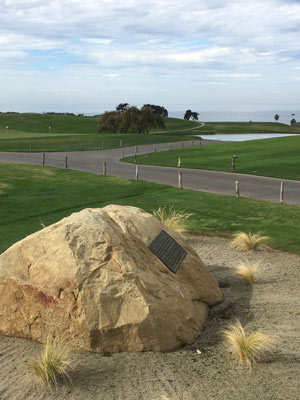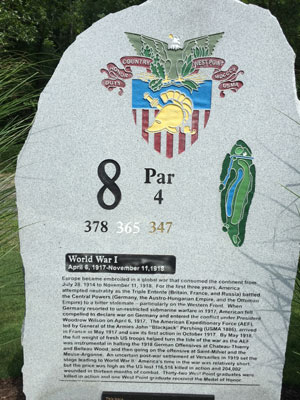Many golf course properties have storied pasts, the land perhaps home to a rich heritage, a historic event or an intriguing previous life. This month, in honor of Veterans Day, GCM spotlights such courses whose ties are to U.S. military history or to those who have served.

Sandpiper Golf Club
Goleta, Calif.
An unassuming stone marker behind the ninth green of the public Sandpiper Golf Club in Goleta, Calif., memorializes the Japanese submarine attack on the former Ellwood Oil Field on Feb. 23, 1942.
Unlike other oil fields along the coast, Ellwood — about 12 miles west of Santa Barbara — had no military protection, rendering it an easy target during World War II. The submarine launched 16 shells. There were no casualties, and damage was relatively minimal. Oil production ceased in 1965, and the property was developed into the 18-hole Sandpiper Golf Club in 1972.
Congressional Country Club
Bethesda, Md.
During World War II, the U.S. government leased the club’s more than 400 acres as training ground for the nation’s first intelligence agency, the Office of Strategic Services, which was the forerunner of the CIA.
According to a 2011 New York Times article, the practice range of the future U.S. Open venue became a rifle range, bunkers were used for grenade practice, and a booby-trapped obstacle course stretched across the first and second holes of the then-18-hole layout. From 1943 to 1945, more than 2,500 soldiers passed through Congressional.

West Point Golf Course
West Point, N.Y.
The 18 holes of the U.S. Military Academy’s West Point Golf Course chronicle the nation’s military history, each granite tee marker commemorating a major U.S. war and honoring those who fought. The markers begin with the Revolutionary War, and conclude with the Iraq War on No. 18. The Robert Trent Jones Sr. design was completed in 1948 and is open to the public.
Cantigny Golf
Winfield, Ill.
The 27-hole public facility is part of the 500-acre Cantigny Park, located about 30 miles west of Chicago. The land belonged to World War I veteran Col. Robert R. McCormick, who served with the First Infantry Division (the Big Red One) in the Battle of Cantigny, the United States’ first significant victory in WWI.
Upon his return, McCormick bestowed on the estate the name of the small French town where the battle had occurred. When he died in 1955, McCormick directed that Cantigny be transformed into a public space for education and recreation. Also within the park is the First Division Museum.
Megan Hirt is GCM’s managing editor.